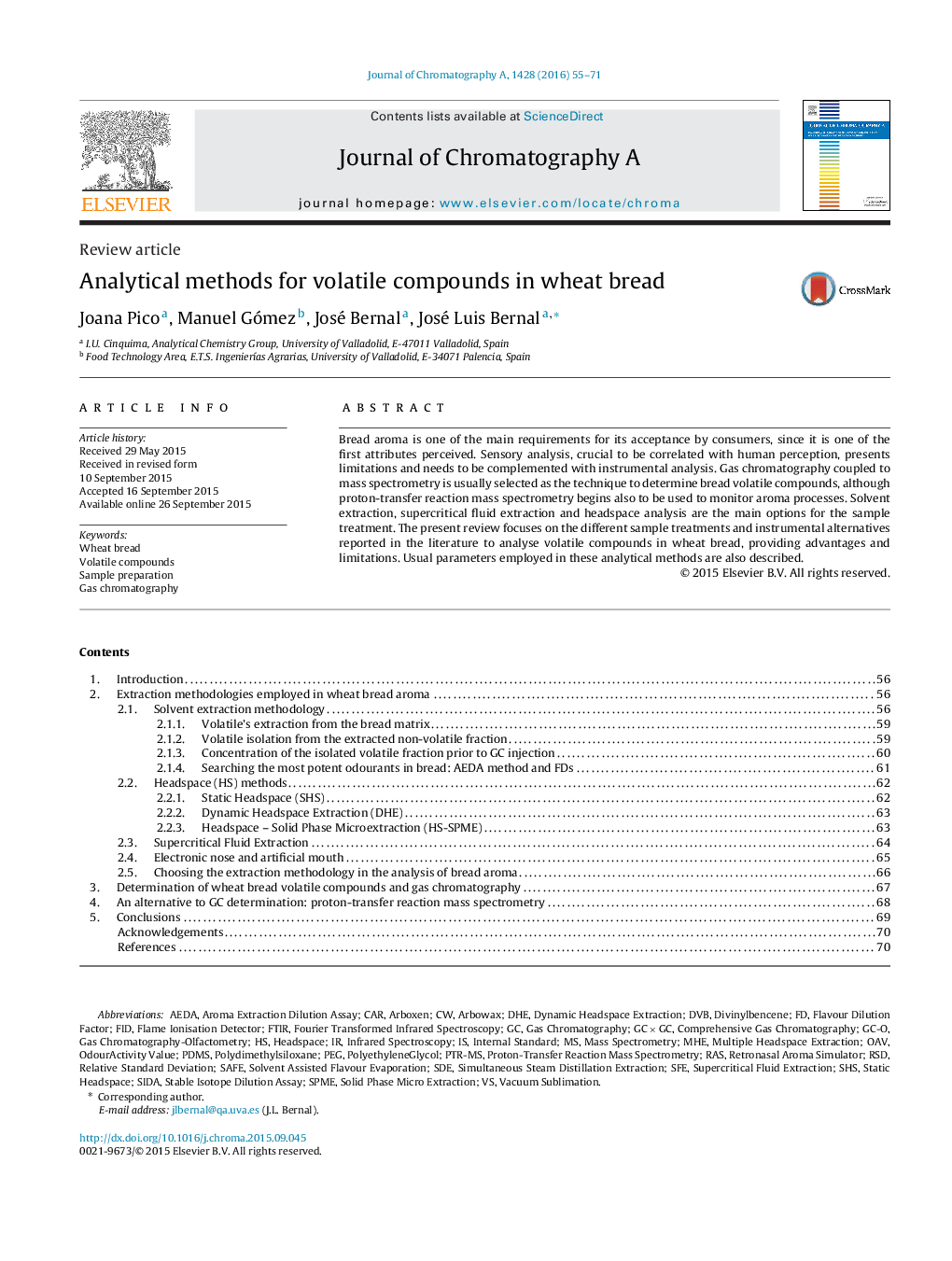| Article ID | Journal | Published Year | Pages | File Type |
|---|---|---|---|---|
| 1199025 | Journal of Chromatography A | 2016 | 17 Pages |
•Most common analytical methods to analyze wheat bread aroma are summarised.•Advantages and drawbacks of each method are also presented.•Solvent extraction normally implies a Soxhlet step followed by SAFE distillation.•Usual head space methodologies are Static HS, DHE and SPME-HS.•Solvent extraction and HS should be considered as complementary methods.
Bread aroma is one of the main requirements for its acceptance by consumers, since it is one of the first attributes perceived. Sensory analysis, crucial to be correlated with human perception, presents limitations and needs to be complemented with instrumental analysis. Gas chromatography coupled to mass spectrometry is usually selected as the technique to determine bread volatile compounds, although proton-transfer reaction mass spectrometry begins also to be used to monitor aroma processes. Solvent extraction, supercritical fluid extraction and headspace analysis are the main options for the sample treatment. The present review focuses on the different sample treatments and instrumental alternatives reported in the literature to analyse volatile compounds in wheat bread, providing advantages and limitations. Usual parameters employed in these analytical methods are also described.
